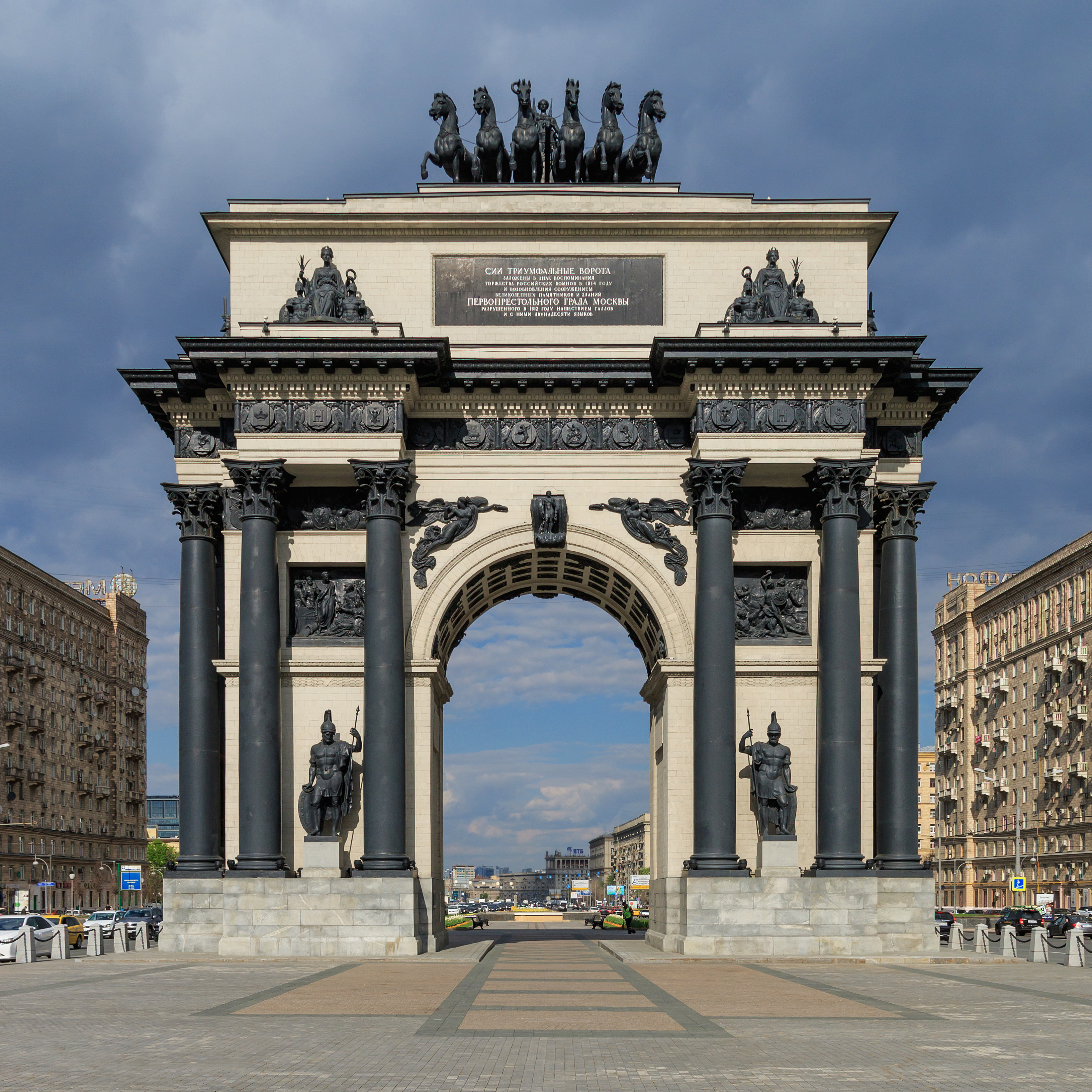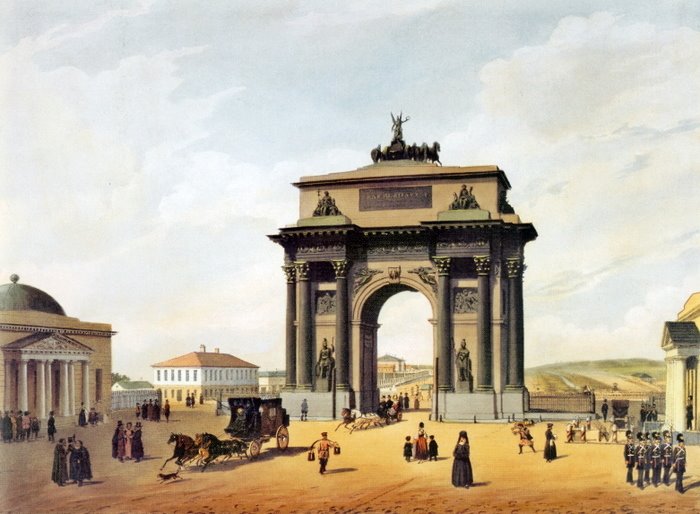Triumphal Arch of Moscow on:
[Wikipedia]
[Google]
[Amazon]

 The third and the oldest surviving
The third and the oldest surviving

 The third and the oldest surviving
The third and the oldest surviving Triumphal Arch
A triumphal arch is a free-standing monumental structure in the shape of an archway with one or more arched passageways, often designed to span a road. In its simplest form a triumphal arch consists of two massive piers connected by an arch, cro ...
in Moscow
Moscow ( , US chiefly ; rus, links=no, Москва, r=Moskva, p=mɐskˈva, a=Москва.ogg) is the capital and largest city of Russia. The city stands on the Moskva River in Central Russia, with a population estimated at 13.0 millio ...
was built in 1829–34 on Tverskaya Zastava Square
Tverskaya Zastava is a square in Central Administrative Okrug in Moscow. Moscow Belorussky railway station, Belorussky railway station faces the square. The streets which terminate at the square are, in counterclockwise order, Leningradsky Avenue ...
to Joseph Bové's designs in order to commemorate Imperial Russia's victory over Napoleon. It replaced an earlier wooden structure built by the veterans of the Napoleonic Wars
The Napoleonic Wars (1803–1815) were a series of major global conflicts pitting the French Empire and its allies, led by Napoleon I, against a fluctuating array of European states formed into various coalitions. It produced a period of Fren ...
in 1814.
The arch was built in brick and lined with ashlar. The columns and statues were of cast iron
Cast iron is a class of iron– carbon alloys with a carbon content more than 2%. Its usefulness derives from its relatively low melting temperature. The alloy constituents affect its color when fractured: white cast iron has carbide impur ...
. A seiuga (six-horse chariot) was designed by Giovanni Vitali. The bilingual inscription in Russian and Latin ran as follows:
The arch was dismantled in 1936 as part of Joseph Stalin
Joseph Vissarionovich Stalin (born Ioseb Besarionis dze Jughashvili; – 5 March 1953) was a Georgian revolutionary and Soviet political leader who led the Soviet Union from 1924 until his death in 1953. He held power as General Secretar ...
's reconstruction of downtown Moscow.
Vitali's sculptures were then put on exhibit at an architectural museum on the grounds of the former Donskoy Monastery
Donskoy Monastery (russian: Донско́й монасты́рь) is a major monastery in Moscow, founded in 1591 in commemoration of Moscow's deliverance from the threat of an invasion by the Crimean Khan Kazy-Girey. Commanding a highway to ...
. After the Second World War
World War II or the Second World War, often abbreviated as WWII or WW2, was a world war that lasted from 1939 to 1945. It involved the vast majority of the world's countries—including all of the great powers—forming two opposi ...
there were plans to rebuild the structure in front of the Belorussky railway station
Belorussky railway terminal (russian: Белору́сский вокза́л, ) is a passenger terminal at the ''Moscow–Passenger–Smolenskaya'' railway station (russian: Москва́-Пассажирская-Смоле́нская, also k ...
.
The current arch was built to Bove's original designs in 1966–68 in the middle of Kutuzovsky Avenue
Kutuzovsky Prospekt (street), Prospekt (russian: Куту́зовский проспе́кт) is a major radial avenue in Moscow, Russia, named after Mikhail Illarionovich Kutuzov, leader of the Russian field army during the French invasion of Ru ...
, close to the Victory Park. An open space surrounding the arch is known as the Victory Square.
See also
*List of post-Roman triumphal arches
This is a list of post-Roman triumphal arches. Since the Renaissance period, rulers and states have sought to glorify themselves or commemorate victories by erecting triumphal arches on the Roman model. Modern arches have ranged from temporary stru ...
References
External links
* {{commons category-inline, Triumphal Arch of Moscow Triumphal arches in Russia Military monuments and memorials Monuments and memorials in Moscow Neoclassical architecture in Russia Rebuilt buildings and structures in Russia Cultural heritage monuments of regional significance in Moscow